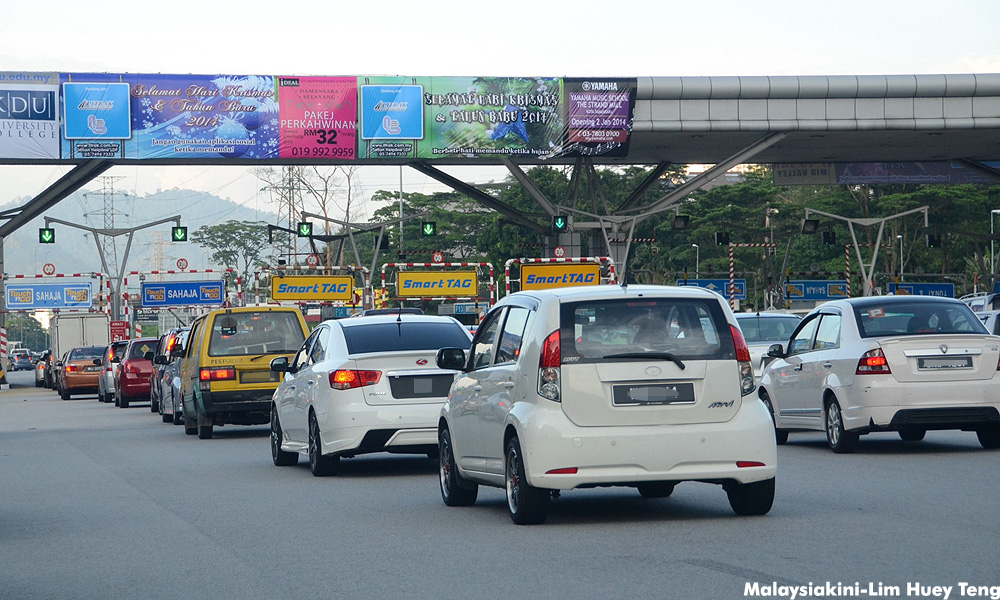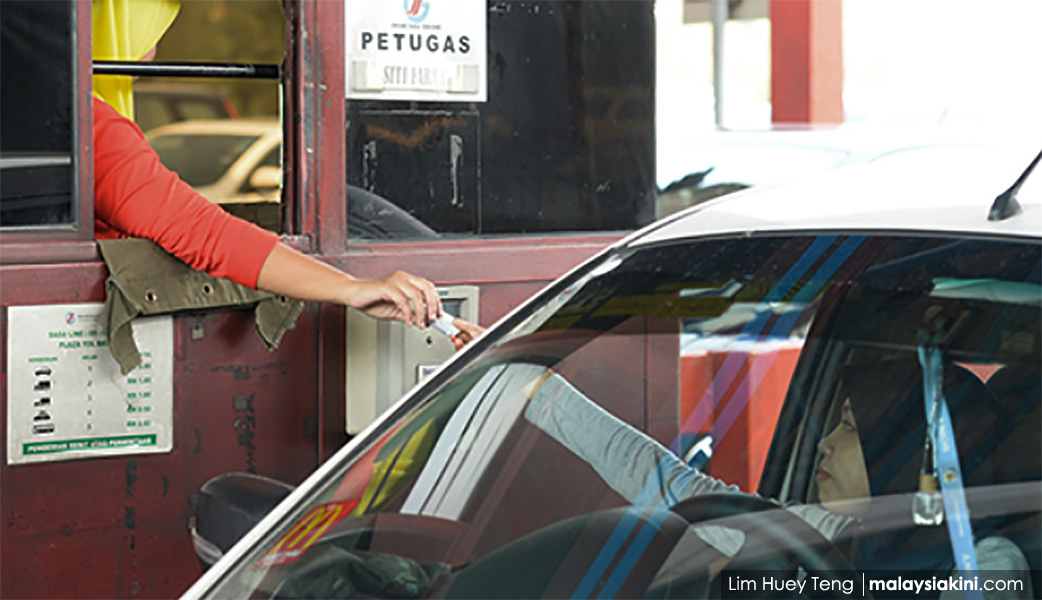It does not mean that if a not-for-profit company is taking over four key toll roads in Kuala Lumpur that there are no risks and concerns - there are some major ones and if things go wrong, it is the government which will be responsible anyway.
There are serious issues of valuation which have to be addressed which could put the entire proposal at risk, such as traffic reductions in the light of increased use of public transport systems, time to expiry of concessions, etc, as we shall see.
Non-profit Amanat Lebuhraya Rakyat Bhd, or ALR, is taking over four toll roads in KL for RM5.48 billion comprising RM1.03 billion equity and debt of RM4.43 billion. If they take over debt, then the initial cash portion is RM1.03 billion for equity.
If they can refinance at a lower rate, they will. Estimated savings for the government is RM4.3 billion in compensations no longer needed for not raising toll rates for the life of the concession. It may involve the possible extension of toll by 5-10 years for roads, but for the one tunnel, there may be a shortening of the concession period.
ALR is in the process of acquiring concession companies Shah Alam Expressway (Kesas), Western Kuala Lumpur Dispersal Link (Sprint), Litrak (operator of Lebuhraya Damansara-Puchong or LDP), and Stormwater Management and Road Tunnel (Smart) by raising funds through sukuk or Islamic bonds. The table gives details of the acquisitions.

According to a report, the remaining term of Kesas' concession is the shortest as it is scheduled to expire on Aug 18, 2023. As for Litrak, the LDP owner, the concession expires on Aug 14, 2030 while the Smart tunnel expires on Dec 31, 2042. The Sprint Highway has multiple components and they expire between Dec 15, 2031, and Dec 14, 2034.
A valid and serious criticism of the buyback at this stage is why so late in the day when most of the concession period has already passed. The table shows RM1.24 billion is being paid for Kesas, which expires in just one year. It would clearly be more prudent to simply let it expire.
Sprint has just a third unexpired, while Litrak has one-quarter of its original tenure left. The only one which has more than half of its tenure left is the Smart tunnel with a debt level of RM313 million and, strangely, whose equity value has been wiped out, implying losses or total debt financing.
There are at least three other serious areas of concern:
1. No toll-rate decrease. The positive effect of no increase in tolls is offset by an increase in the overall tenures of the toll concessions. And the promised toll reduction in the earlier Pakatan Harapan proposal is not happening.
2. Toll revenues may slump in future. With the mass rapid transit (MRT) system rapidly developing with stages coming to completion in the next few years, toll revenues may slump. I wonder if the government took sufficient account of this.
3. Economically, why put a cap on toll increases. These four concessionaires operate in the KL area where traffic congestion is high. There is no reason to prioritise lowering tolls then when we should be considering reducing traffic overall.
Note that all these concerns still remained even under the old Harapan deal and may be sufficient reason not to buy them.
Initial impressions are of a slightly repackaged version of the earlier deal under the Harapan government announced in June 2019, which I commented upon then here, to avoid the debt coming on to the government’s books.
In fact, a statement from the Harapan presidential council on Tuesday takes credit for the scheme and says its plan involved discounts of up to 30 percent on the four highways for 16 hours a day and reducing toll rates on the North-South Highway (Plus) by 18 percent. But in this new arrangement, the toll rates remain.

If this is true, then clearly the new plan is inferior even if it is RM700 million cheaper for the acquisition, as indeed it should be since some two years have elapsed since the plan and the concession lives have been accordingly reduced.
Original sin
The main advantage is that ALR is a not-for-profit organisation - the surplus will be returned to the government to shorten the toll period but over and above this, the arrangement means the government won’t bear the debt burden.
The earlier Harapan proposal was for a special purpose vehicle, or SPV, owned by the MOF Inc to take over the concessions. Under this, the government takes the debt burden on its books. The latest deal skirts around it.
But realistically if ALR runs into trouble, the government will have to bail it out as it is public infrastructure, in other words, still a contingent liability. It’s a clever but not entirely above-board deal for the government to avoid having the debt on its books while still being responsible for any adverse financial consequences.
In economic terms, ALR or an MOF SPV will still return excess money to the government, so there is no difference in cash flow. Essentially it is the same thing. The record-keeping is different, taking the debt off the government accounts.
The other effect of this deal is a cash injection or debt removal of RM5.48 billion for the shareholders of the concessions, most of which is owned by Gamuda which gets RM2.88 billion of the purchase price (see table). This represents its total debt reductions plus cash injections.
Thus, after enjoying fabulous cash returns for most of the concession periods, it now gets to exit for a substantial additional injection of cash towards the last years of the concession. It can utilise this for projects such as the RM46 billion Penang Master Plan Project and for the RM60 billion MRT3 project.
It looks like a rather good deal for Gamuda and thus cannot be a great one for ALR and hence the government when there can be no additional synergistic benefit from the deal which is mere financial engineering.

The origin of the problem goes back to when the concessions were awarded. It does appear that the contracts were skewed in favour of the concessionaires for which the public is paying now through a system of hefty tolls which often exceed fuel costs.
It does indeed appear that the government may be compounding the original sin by using a non-profit to buy back the concession at exactly the time that its value is declining with the decline set to accelerate in future as toll traffic slows or even reduces. That increases the risk of the project considerably.
For the eminent five board members of ALR who are also equal shareholders of the non-profit, it looks like the first order of business will be to sit on their hands and just check on the valuation first before they do anything else.
Right now, it looks like the deal is done and it is up to the board to execute it. But if the valuation is wrong, the whole thing collapses and the government will have to step in to rescue it, which I am sure is not what the board wants. It needs to ensure that the deal is viable and that means further careful, considered evaluation and extensive sensitivity analysis and testing.
Dare we hope that the board members will keep all of us well and truly informed at every stage of its decisions? This will be very unlike the backdoor government that appointed them and which makes it a habit over and over again to hide vital information from the public and even punish those who expose it. - Mkini
P GUNASEGARAM, a former editor at online and print news publications, and head of equity research, is an independent writer and analyst.
The views expressed here are those of the author/contributor and do not necessarily represent the views of MMKtT.



No comments:
Post a Comment
Note: Only a member of this blog may post a comment.